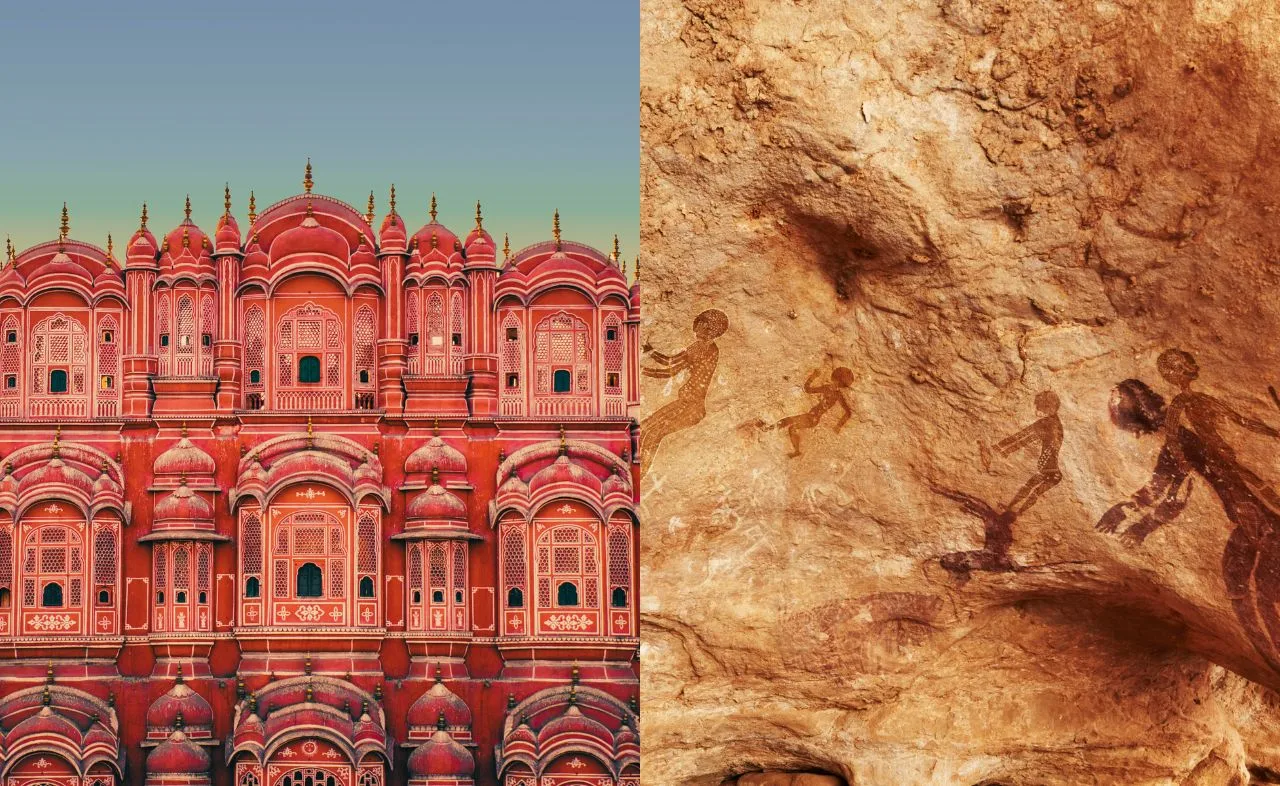Stone Age rock paintings of cup marks and sharp-edged tools were discovered in a village in Chittorgarh district, Rajasthan. The discovery underscores the prehistoric importance of Hadauti and Chittorgarh.
Last week, three local residents encountered unusual markings on a rock in a forested area near Amarpura village, Rawatbhata. Historian Tej Singh from the Maharishi History Institute in Kota visited the site with his team after receiving the information. Singh noted that cup-shaped engravings and a mortar, likely used by early humans for grinding food, were discovered at the site. He explained that such cup marks and circular indentations on rocks are characteristic of early Stone Age human activity.
Amarpura village is located approximately 50 kilometres from the Aalaniya River in Kota, these findings further enhance the region’s significance as a hub for Stone Age carvings.
The markings are estimated to date back between 35,000 and 200,000 years. Singh suggested that this might represent the oldest evidence of human habitation in present-day Rajasthan, drawing comparisons to a similar discovery made in 2003, a mere 200 metres away from this site.
The mortar, weighing 2.4 kilograms, along with sharp-edged stones found at the location, suggests that early inhabitants may have used these tools to process wild grains, nuts, and legumes.
These findings have been shared with the Archaeological Survey of India (ASI) in Jodhpur and the Department of Archaeology and Museology (DAM) for further analysis.
Jafarullah Khan, a former superintendent archaeologist with DAM, noted that the Hadauti region, along with the neighbouring Malwa region in Madhya Pradesh, served as key centres for Stone Age settlements. “This discovery aligns with previous findings along the Aalaniya and Chambal Rivers,” said Khan. According to UNESCO, the Chambal Basin and central India are home to one of the largest known concentrations of rock art sites globally. Furthermore, Khan has urged the government to safeguard the area and initiate extensive excavation efforts to reveal more about early human life.
